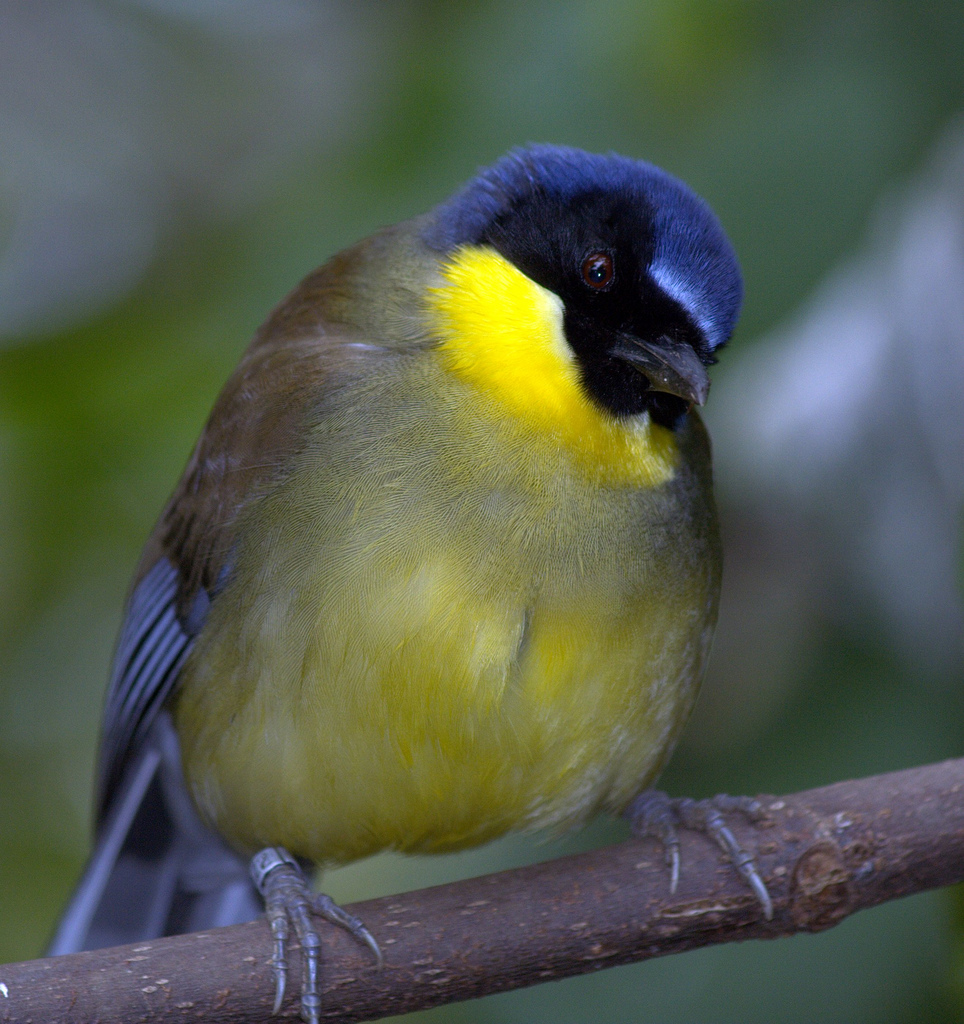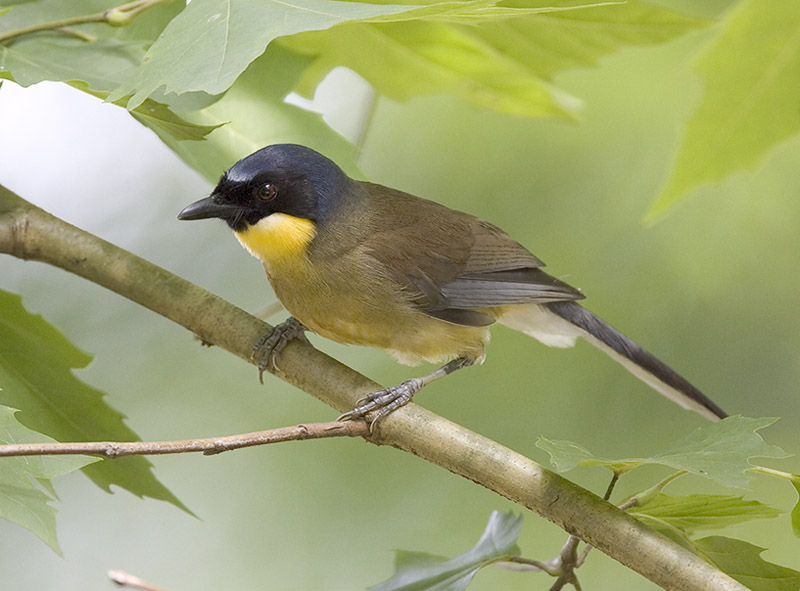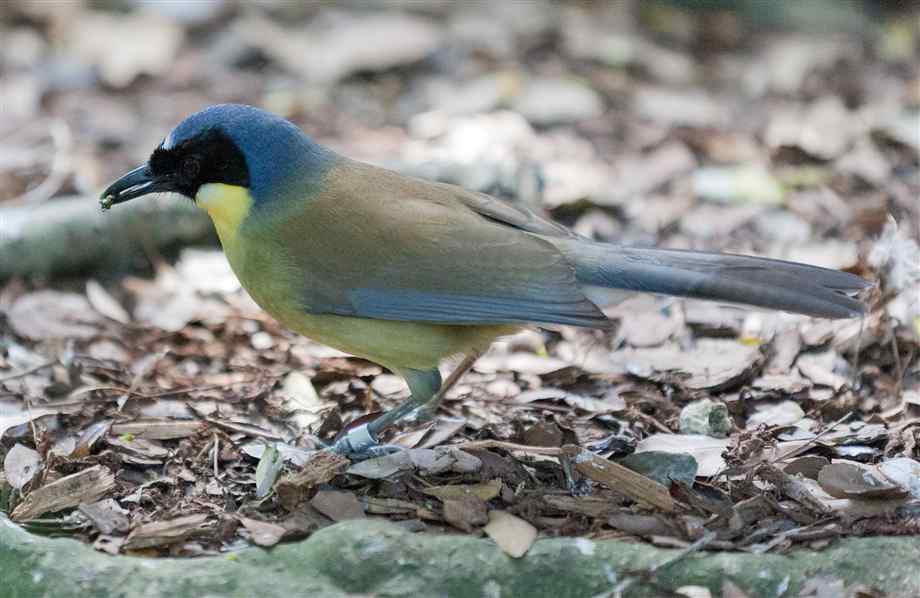
Garrulax galbanus
SUBFAMILY
Timaliinae
TAXONOMY
Garrulax galbanus Godwin-Austin, 1874, Manipur. Three subspecies.
Chinese populations may constitute separate species.
OTHER COMMON NAMES
English: Yellow-bellied laughing thrush; French: Garrulaxe а
gorge jaune; German: Gelbbauchhдherling.
PHYSICAL CHARACTERISTICS
9.1 in (23 cm); 1.75 oz (50 g). Elegant thrush-shaped bird with
brown mantle, black mask, and yellow throat and underparts.
Sexes monomorphic. Nominate subspecies, from the western
part of the range, has an olive green nape and crown, while the
two isolated eastern subspecies have brilliant dark blue napes
and crowns instead. Jiangxi population has a clear, brilliant yellow
chest, while birds from Yunan have yellowish gray chests.
DISTRIBUTION
Western population in eastern India (the Manipur Valley, Nagaland,
Assam, and Mizoram), the Chin Hills of Mynamar, and
possibly Bangladesh. Isolated Chinese populations: one in
Jiangxi Province, another in Yunnan, and perhaps another yet
to be ascertained, from which captive specimens have arrived.
HABITAT
Dense scrub.
BEHAVIOR
Lives in flocks, stays near ground.
FEEDING ECOLOGY AND DIET
Hunts through leaf-litter and other substrate for insects. Also
consumes fruit.
REPRODUCTIVE BIOLOGY
Captive birds produce clutches of two or three eggs, in smallish
cup-shaped nests of twigs and plant fibers. Incubation, lasting
13 days, is performed by both parents. As with other
Garrulax, while a flock may be present during nesting, only
one pair actually breeds.
CONSERVATION STATUS
Though previously listed as Near Threatened, IUCN designated
it as globally non-threatened as of 2002. However, isolated
Chinese populations, possibly constituting a separate
species, appear to be very small and occupy limited ranges.
Not listed by CITES. Commercial live bird exports banned by
People’s Republic of China in 2001.
SIGNIFICANCE TO HUMANS
International captive breeding projects hatched over 100 since
1990.
Photo Gallery of - Yellow-throated laughing thrush




 Animalia Life
Animalia Life